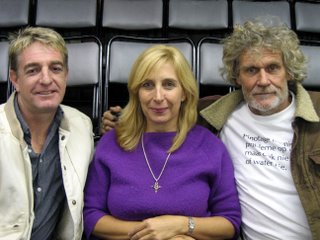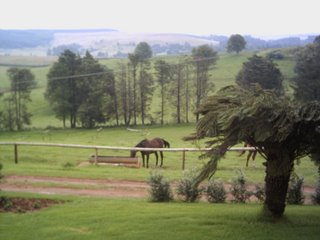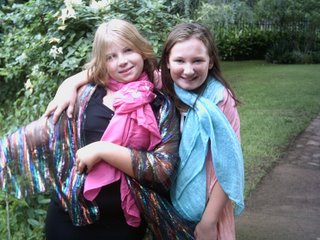
As Christmas approaches like a fake snow avalanche, I can’t help thinking what is this Christmas-thing all about? Is it about the religious ritual which seems to becoming more and more marginalized? Is it about being with family even though these occasions can end in acrimonious recriminations as festive cheer and beer loosen all inhibitions about past resentments? Or is it just about the presents?
The latter seems to have become the most dominant aspect of this annual regurgitation of cash as shops seethe with people ready to bare their teeth and fight to the death to get that life-altering bar of soap/aftershave lotion for Aunt/Uncle/Mother/Father. I must say that watching such blatant consumerism isn’t my favourite aspect of the human race, and I try to avoid being part of the manic crowd for as long as I can possibly hold out.
So this year I thought of giving presents which are not bought in the usual shopping malls. Now I’m not talking about the abstract nouns sprouted forth by beauty queens at pageants. You know the stuff: World Peace; Elimination of Poverty; Cures for Aids, a new wig for Donald Trump. You know that sort of thing. Those would be nice, of course. But I’m thinking along the lines of virtual presents: presents I could give to whomever I wanted if the only limitation was my imagination.
Let me give you an idea of what I’m talking about. If I could give anyone in the world anything I’d like, I go for a sort of Wizard of Oz theme to make it simpler. Firstly, let’s look at the scarecrow and imagine that we’re looking for someone who needs a brain. Oh yes, there are multiple contenders. Just think about George “It’s not about the Oil” Bush? Or Manto “Bring me my Garlic” Thsabalala? And the all-time classic, Jacob “I’ll just pop into the shower” Zuma? We are spoilt for choice. But the ultimate contender has to be the Government Department Official in charge of paying people whom I phoned earlier this year after not having been paid four months. She had no idea who I was when I asked her to look up my invoice. Finally she asked to which organization I belonged. I told her I was not part of an organization but worked as an individual. She asked how one spelt that. Not quite believing my ears, I spelt out each letter slowly but carefully: “I… N… D… I… V…I…” When I’d finished she waited a few seconds before pronouncing that she definitely didn’t have anyone by that name on her computer. Bless her. I am now thinking of having a pseudonym: “I. M. Individual.” It has a certain ring about it, don’t you think? No, there’s no doubt. She’s a definite shoe-in for the “Get a Brain” present.
Next I thought about the tin man and his lack of a heart. There were a million contenders for this one too. All three candidates above come in closely with their own personal heartlessness, most notably Manto “Let them eat Beetroot” Thsabalala and her callous lack of concern about the ARV roll-out. But the real contenders in this category must be the abominable child rapists, the reckless drivers who wipe out innocent people and then the criminals who’d kill anyone from a gentle housewife to a policeman on duty at his very own police station. Their callous disregard for everything once considered sacred makes them sorely in need of a heart. But I’m trying to be light-hearted this Christmas (pardon the pun). So this leads me to think that the best candidate for the person who needs a heart must be Tom Cruise. Remember how he thought his wife-to-be would be just peachy giving birth to their child without being able to utter a sound. A silent birth? Not even a single scream allowed from mother-to-be? Is he mentally deranged? No. I think he’s just the most heartless candidate. Especially after he’d said that post-natal depression does not exist. Umm. Perhaps he needs a large dose of female hormones instead of a heart? Well, in my virtual world I’ll give him both.
Lastly, the lion without courage award goes to me. I can think of other contenders, such as Thabo Mbeki about to address a rally with Zuma supporters. And also the Bafana Bafana team trying to make some sort of effort to reach our own world cup in 2010. But, selfishly I’m keeping this one for me. I need a huge dose of courage just to face the daily trails of life with all the above idiots in the world around me! Well, I can only dream, can’t I? After all, it is Christmas.
The latter seems to have become the most dominant aspect of this annual regurgitation of cash as shops seethe with people ready to bare their teeth and fight to the death to get that life-altering bar of soap/aftershave lotion for Aunt/Uncle/Mother/Father. I must say that watching such blatant consumerism isn’t my favourite aspect of the human race, and I try to avoid being part of the manic crowd for as long as I can possibly hold out.
So this year I thought of giving presents which are not bought in the usual shopping malls. Now I’m not talking about the abstract nouns sprouted forth by beauty queens at pageants. You know the stuff: World Peace; Elimination of Poverty; Cures for Aids, a new wig for Donald Trump. You know that sort of thing. Those would be nice, of course. But I’m thinking along the lines of virtual presents: presents I could give to whomever I wanted if the only limitation was my imagination.
Let me give you an idea of what I’m talking about. If I could give anyone in the world anything I’d like, I go for a sort of Wizard of Oz theme to make it simpler. Firstly, let’s look at the scarecrow and imagine that we’re looking for someone who needs a brain. Oh yes, there are multiple contenders. Just think about George “It’s not about the Oil” Bush? Or Manto “Bring me my Garlic” Thsabalala? And the all-time classic, Jacob “I’ll just pop into the shower” Zuma? We are spoilt for choice. But the ultimate contender has to be the Government Department Official in charge of paying people whom I phoned earlier this year after not having been paid four months. She had no idea who I was when I asked her to look up my invoice. Finally she asked to which organization I belonged. I told her I was not part of an organization but worked as an individual. She asked how one spelt that. Not quite believing my ears, I spelt out each letter slowly but carefully: “I… N… D… I… V…I…” When I’d finished she waited a few seconds before pronouncing that she definitely didn’t have anyone by that name on her computer. Bless her. I am now thinking of having a pseudonym: “I. M. Individual.” It has a certain ring about it, don’t you think? No, there’s no doubt. She’s a definite shoe-in for the “Get a Brain” present.
Next I thought about the tin man and his lack of a heart. There were a million contenders for this one too. All three candidates above come in closely with their own personal heartlessness, most notably Manto “Let them eat Beetroot” Thsabalala and her callous lack of concern about the ARV roll-out. But the real contenders in this category must be the abominable child rapists, the reckless drivers who wipe out innocent people and then the criminals who’d kill anyone from a gentle housewife to a policeman on duty at his very own police station. Their callous disregard for everything once considered sacred makes them sorely in need of a heart. But I’m trying to be light-hearted this Christmas (pardon the pun). So this leads me to think that the best candidate for the person who needs a heart must be Tom Cruise. Remember how he thought his wife-to-be would be just peachy giving birth to their child without being able to utter a sound. A silent birth? Not even a single scream allowed from mother-to-be? Is he mentally deranged? No. I think he’s just the most heartless candidate. Especially after he’d said that post-natal depression does not exist. Umm. Perhaps he needs a large dose of female hormones instead of a heart? Well, in my virtual world I’ll give him both.
Lastly, the lion without courage award goes to me. I can think of other contenders, such as Thabo Mbeki about to address a rally with Zuma supporters. And also the Bafana Bafana team trying to make some sort of effort to reach our own world cup in 2010. But, selfishly I’m keeping this one for me. I need a huge dose of courage just to face the daily trails of life with all the above idiots in the world around me! Well, I can only dream, can’t I? After all, it is Christmas.






